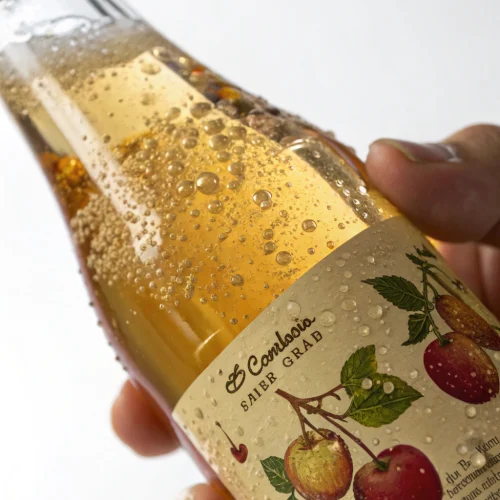
Sparkling Hard Apple Cider
This homemade Sparkling Hard Apple Cider combines the rustic charm of traditional cider with an effervescent twist. Whether you're a seasoned home brewer or a curious beginner, this recipe delivers that satisfying pop and fizz that elevates your homemade cider to craft-quality standards.
Equipment
- Fermentation Vessel (Glass Carboy or Food-Grade Bucket)
- Airlock
- Siphoning Tubes
- Bottles (Swing-Top or Beer Bottles with Caps)
- Brewing Sanitizer
- Bottling Bucket
Ingredients
Primary Ingredients
- 1 gallon apple cider or unfiltered apple juice preferably unpasteurized
- 1 packet champagne yeast or cider yeast
- 1/4 cup brown sugar or honey for carbonation
Optional Ingredients
- 1 campden tablet for wild yeast inhibition
- 1 tsp yeast nutrient recommended
- 1/2 tsp pectic enzyme improves clarity
- 5 priming sugar tablets or 3-4 tablespoons honey for carbonation
- 1 tsp acid blend for balancing flavor
- 1 cinnamon stick for flavor complexity
Instructions
- Thoroughly sanitize all equipment that will come in contact with your cider. This includes fermentation vessels, airlocks, siphoning tubes, and bottles.
- If using unpasteurized cider, add a crushed Campden tablet and let it sit for 24 hours to kill wild yeast and bacteria. For store-bought pasteurized cider, skip this step, but warm the juice to room temperature (65-75°F/18-24°C).
- In a small, sanitized bowl, activate your yeast according to package instructions. Typically, mix the yeast with warm water (95-105°F/35-40°C) and wait 5-15 minutes until frothy.
- Transfer your apple juice to a primary fermentation vessel. Add the yeast nutrient, pectic enzyme, and acid blend if using. Pour in your activated yeast and stir gently to distribute evenly. Seal with an airlock and store in a cool, dark place (60-70°F/15-21°C is ideal).
- Allow the cider to ferment for 10-14 days, or until bubbling slows to less than one bubble per minute. The specific gravity should drop from around 1.050 to near 1.000.
- After primary fermentation, gently transfer (siphon) your cider to a bottling bucket, leaving the sediment behind. Add your priming sugar (3-4 tablespoons of honey or 1/4 cup of brown sugar per gallon). Stir gently but thoroughly.
- Fill sanitized swing-top bottles or capped beer bottles, leaving about 1 inch of headspace. Seal tightly.
- Store the bottles at room temperature for 7-14 days to allow carbonation to develop, then transfer to refrigeration to stop fermentation and clear the cider.
Notes
For a sweeter cider, use non-fermentable sweeteners like xylitol or erythritol after fermentation is complete.
Be careful with carbonation - over-carbonated bottles can explode. If you suspect over-carbonation, refrigerate bottles immediately.
Properly stored, your homemade sparkling hard apple cider can last 6-12 months while maintaining quality.
The transformation from sweet juice to complex, effervescent cider is truly magical – and accomplishing it in your own kitchen brings undeniable satisfaction.
Nutrition
Calories: 160kcalCarbohydrates: 12gSugar: 10gVitamin C: 10mg
Tried this recipe?Let us know how it was!